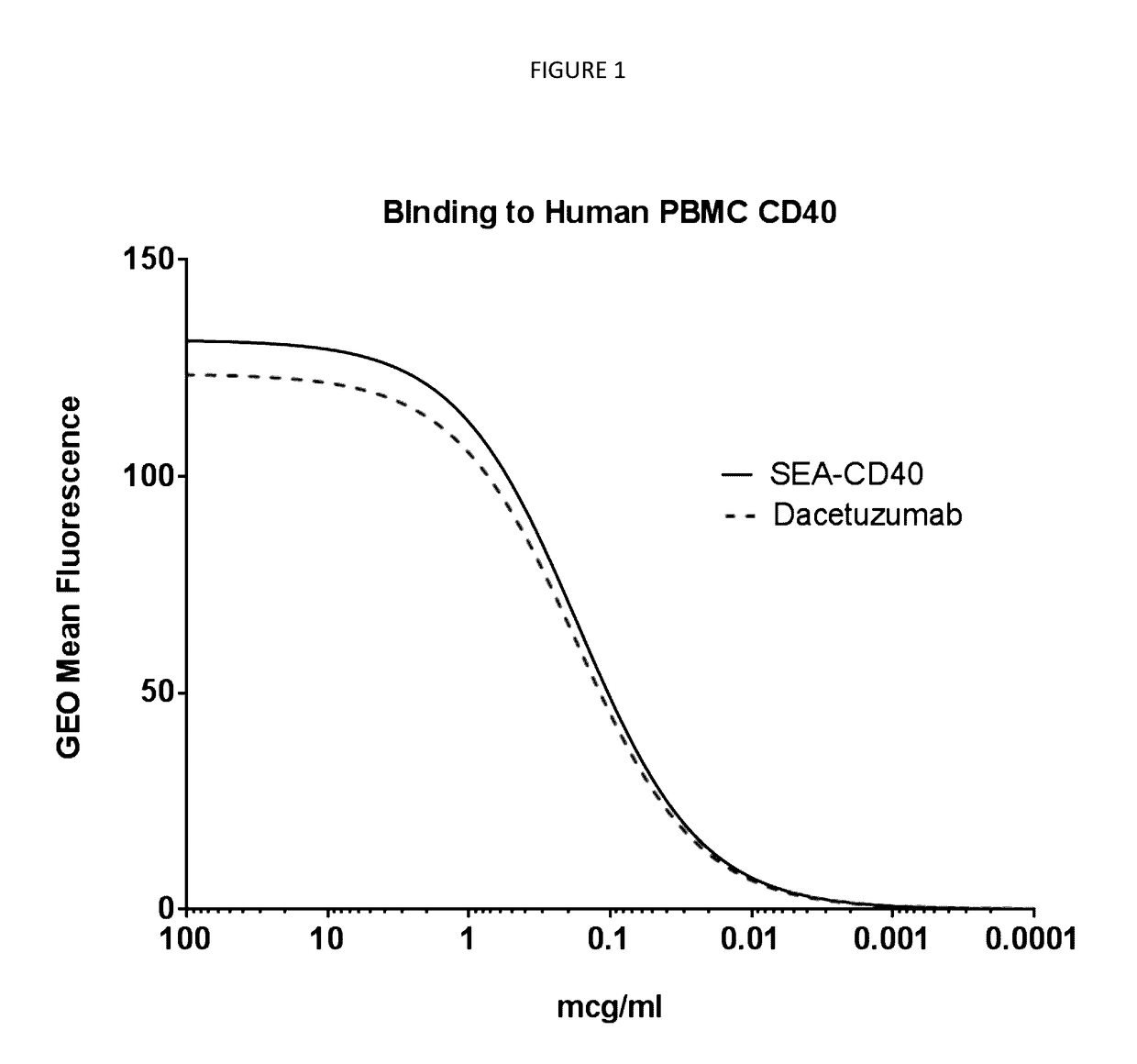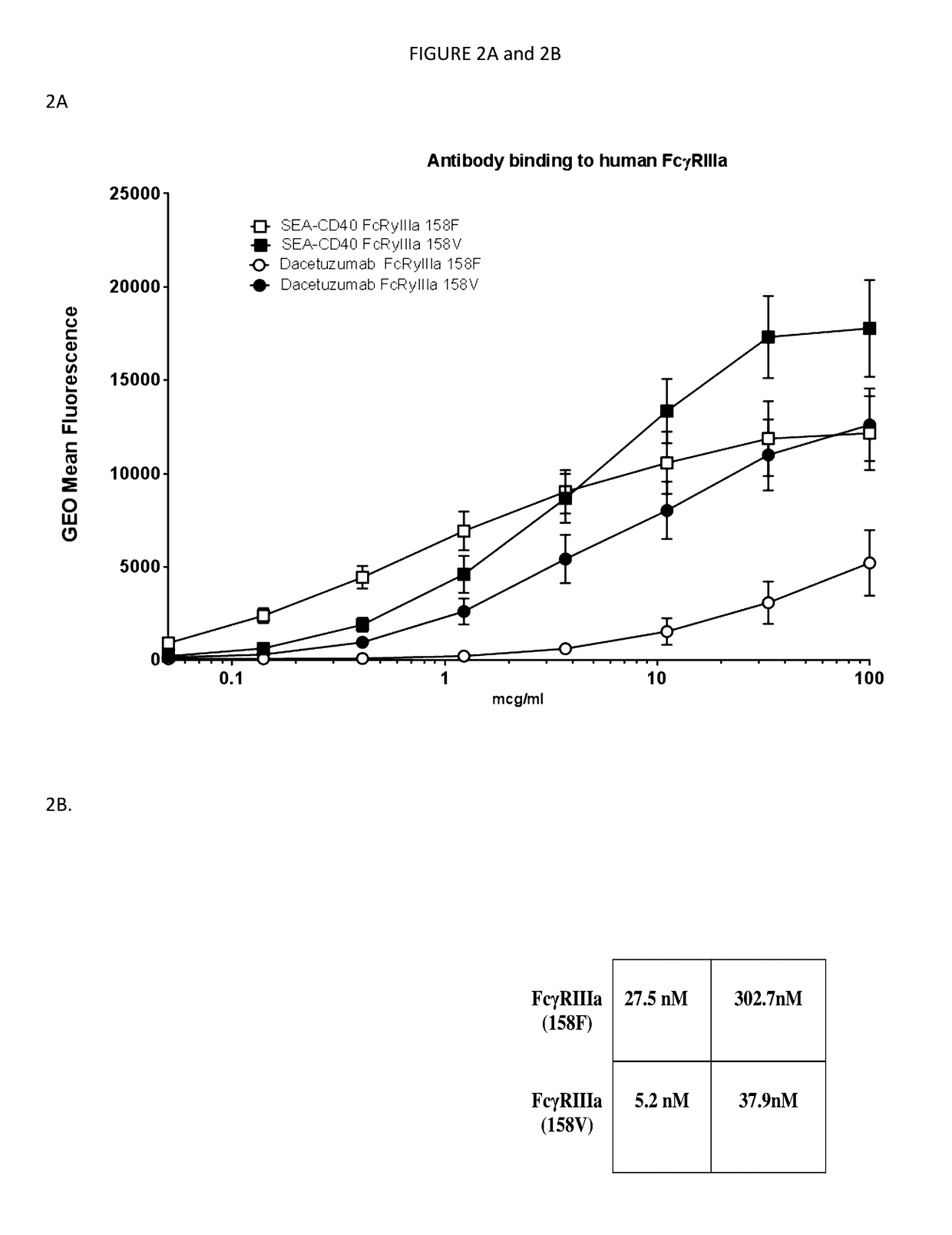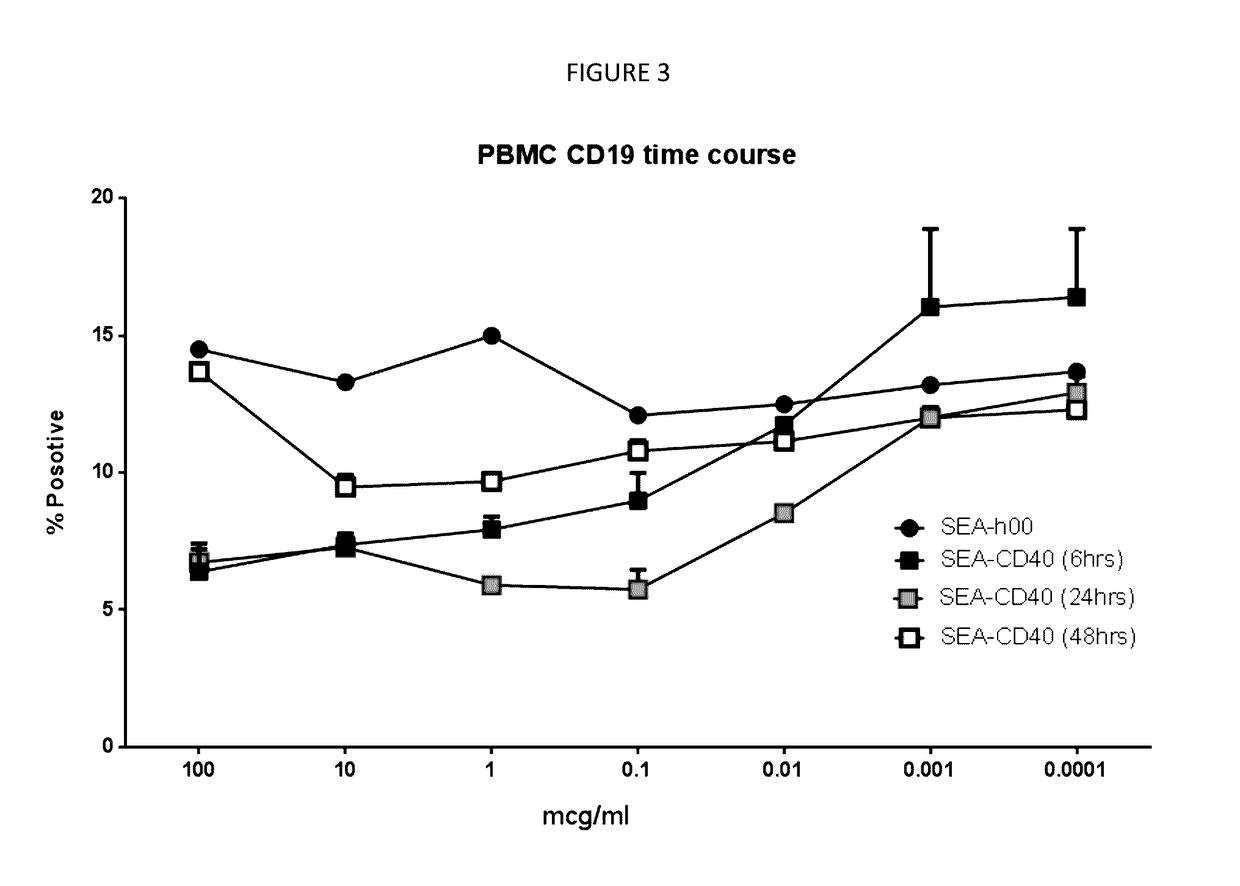Dosage and administration of non-fucosylated Anti-cd40 antibodies
a non-fucosylated, anti-cd40 technology, applied in the direction of antibody medical ingredients, catheters, drug compositions, etc., can solve the problem that none of the antibodies have shown sufficient activity
- Summary
- Abstract
- Description
- Claims
- Application Information
AI Technical Summary
Benefits of technology
Problems solved by technology
Method used
Image
Examples
example 1
of Non-Fucosylated hS2C6 Antibody
[0112]The humanized anti-CD40 antibody, S2C6 with heavy and light chains of SEQ ID NOs: 1 and 2 was expressed in CHO cells. A fucosylation inhibitor, 2-fluorofucose, was included in the cell culture media during the production of antibodies resulted in non-fucosylated antibody, SEA-CD40. See, e.g., Okeley et al., Proc. Nat'l Acad. Sci. 110:5404-55409 (2013). The base media for cell growth was fucose free and 2-flurofucose was added to the media to inhibit protein fucosylation. Ibid. Incorporation of fucose into antibodies was measured by LC-MS via PLRP-S chromatography and electrospray ionization quadrople TOF MS. Ibid. Data not shown.
example 2
ization of Non-Fucosylated hS2C6 Antibody
[0113]CD40 Binding Affinity Determination of SEA-CD40:
[0114]For isolation of peripheral blood mononuclear cells (PBMCs), human whole blood was supplied by Astarte Biologics. Briefly, blood was collected into heparin tubes and delivered to Seattle Genetics within four hours of being drawn. Upon arrival blood was aliquoted into 50 ml conical tubes (falcon) and spun at 200 g in an Eppendorf 5810R (A-4-62 rotor) for 20 minutes at 25° C., without break to separate the platelet rich fraction. Following centrifugation, three distinct layers were formed: bottom layer, red blood cells (accounting for 50-80% of the total volume); middle layer, very thin band of white blood cells; top layer, straw-colored platelet rich plasma (PRP).
[0115]The upper straw colored layer with which is enriched in platelets was removed with a one ml pipette. Once the platelet rich plasma was removed blood was diluted with equal volumes of sterile PBS (Gibco, lot 1618435, ept...
example 3
dulatory Activity of Non-Fucosylated hS2C6 Antibody
[0143]Identification of Active Doses of SEA-CD40:
[0144]SEA-CD40 is proposed to be active at dose levels that activate antigen-presenting cells, which can be characterized by upregulation of activation markers, such as MHC class I or II, or CD86. Activation markers on PBMCs following treatment with various concentrations of SEA-CD40 from 6 to 48 hours were assessed as described above (Assessment of Activation markers on PBMCs). The difference between treatments with isotype control SEA-h00 and SEA-CD40 for each activation marker were calculated and plotted versus SEA-CD40 concentrations and treatment time. The steepest response-concentration curves were observed at 24 hours for CD86 and MHCII and 48 hours for MHCI. Response-concentration data (24 hr CD86, 24 hr MHCII and 48 hr MHCI) were fitted by nonlinear regression using the following equation, where 0% and 100% responses are defined as the smallest and largest values in the data ...
PUM
| Property | Measurement | Unit |
|---|---|---|
| Fraction | aaaaa | aaaaa |
| Time | aaaaa | aaaaa |
| Time | aaaaa | aaaaa |
Abstract
Description
Claims
Application Information
 Login to View More
Login to View More - R&D
- Intellectual Property
- Life Sciences
- Materials
- Tech Scout
- Unparalleled Data Quality
- Higher Quality Content
- 60% Fewer Hallucinations
Browse by: Latest US Patents, China's latest patents, Technical Efficacy Thesaurus, Application Domain, Technology Topic, Popular Technical Reports.
© 2025 PatSnap. All rights reserved.Legal|Privacy policy|Modern Slavery Act Transparency Statement|Sitemap|About US| Contact US: help@patsnap.com



